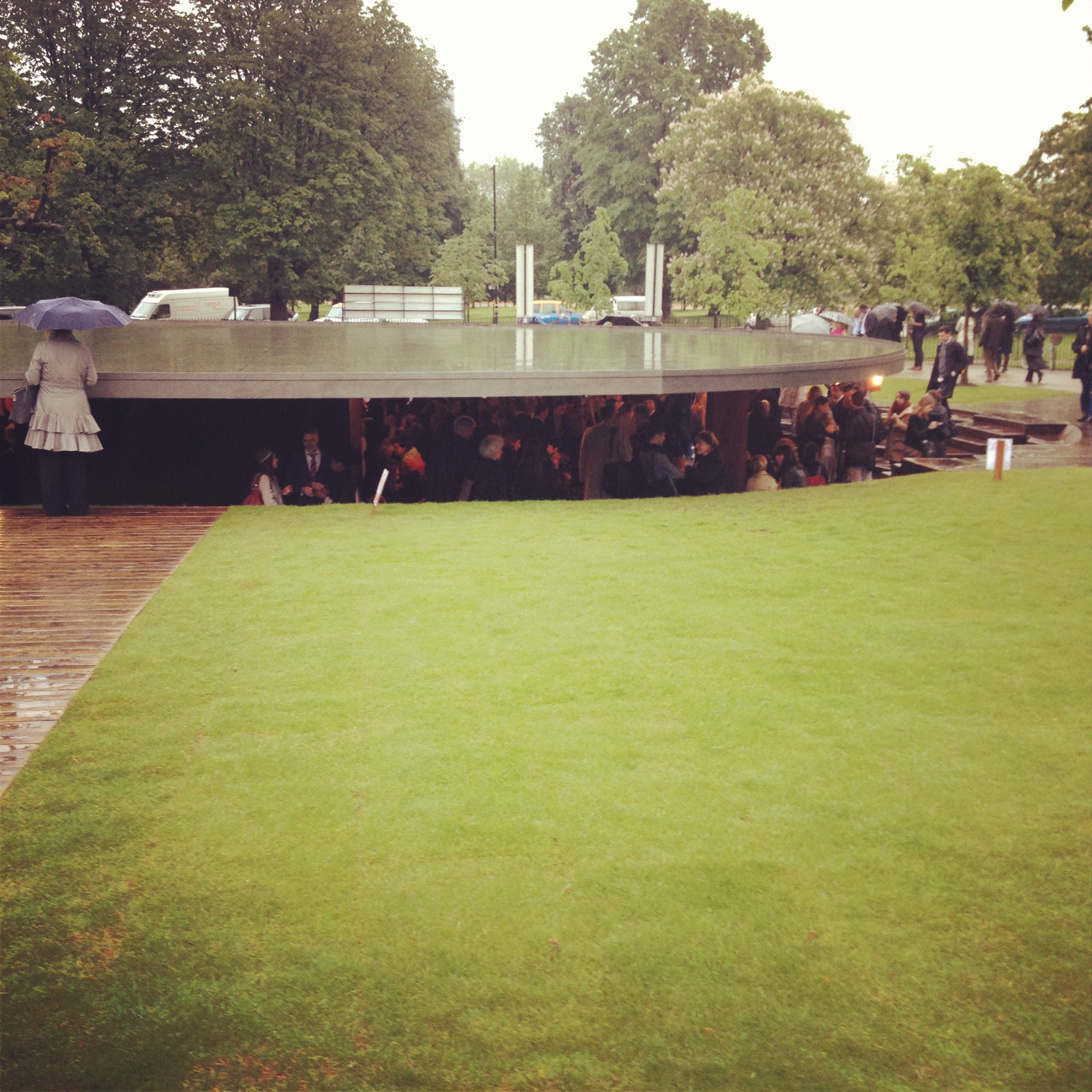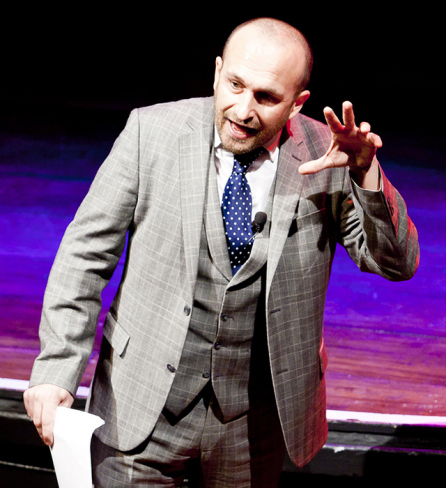 Wednesday, May 16, 2012
Wednesday, May 16, 2012 Fashion and Fantasy: Whats in Vogue and why does it matter?
@ Testbed 1 at The Doodle Bar - 16th May
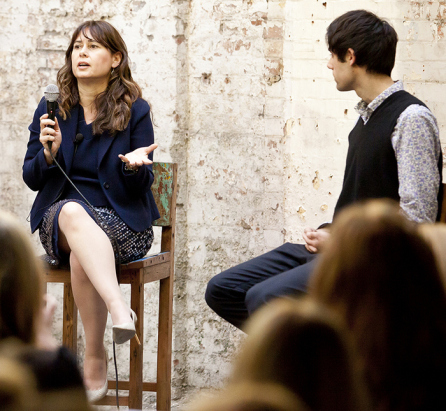
Alexandra Shulman has been the editor of British Vogue for two decades, through huge changes to society and the fashion industry. She is considered to be a journalist foremost, rather than a fashion editor, which is reflected by the OBE she received in 2005 for services to the magazine industry. Shulman insists she hadn't much ambition in her childhood, where she enjoyed to escape into the girl-gang dynamic of Enid Blyton et al. Her career began with a false start when she was fired from her first job in the music industry. So she plumped for journalism instead.
Shulman started at Conde Naste in 1982, working for Tatler; after a brief stint as the features editor of Vogue, she soon switched to the manlier calling of editing GQ. However, in 1992, she returned to the helm of Vogue and presided over the nineties, often perceived as the gritty era of the magazine. A 1993 cover featured Corinne Day's photo of the teenage Kate Moss, and thereafter Vogue played its part in creating an icon. The famous 'Golden Issue' in December 2000 featured Moss' silhouette, a cover echoed only this month in June's Olympic Issue. Its theme and content exemplify Shulman's increasingly ecclectic editorial dirtection: Vogue is in touch not just with the latest trends but the broader zeitgeist too. 'This month's iconoclastic mix is something I am particularly proud of' declares the editor's letter. Indeed, covers have recently featured music stars, such as Rihanna and Adele - a new turn. A recent initiative, the Vogue Festival, which included interviews and talks, also showed the versatility of Shulman's Vogue.
The June issue's editorial also sends a more sober message to the fashion industry, re-enforcing the magazine's position on the welfare of models. The six points, signed by Vogue's editors worldwide, include a promise not knowingly to use models younger than sixteen, and pledge mentors to young models. They encourage producers to give healthy food options and encourage designers to 'consider the consequences of unrealistically small sample sizes of their clothing' (the clothes which are sent to magazines to use in their shoots). Small samples force publications to use thin models. In 2005, Shulman made the same plea to designers, but little has changed. Her concern for Vogue's role in annorexic behaviour has grown. While Shulman used to argue that the problem had little to do with fashion and more to do with poor food (in a world 'where it's unpleasantly easy to be overweight'), she now accepts that such publications have a certain responsibility, and has been proactive to do her bit.
Outside of fashion, it seems Shulman is interested in friendship. Her recent obituary for Marie Colvin is a touching portrait of a great friend above all. And the editor's debut novel, Can We Still be Friends is a convincing examination of friendship too, as three close young women become adults in the early eighties and discover their respective values and priorities.
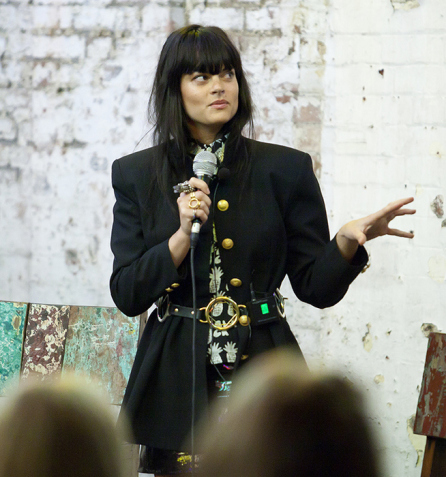 Tessa Edwards is an exciting British designer who is quickly gaining recognition for her visionary aesthetic. She confronts the conformity she finds in consumerist fashion, rejecting trends and creating looks that exist in their own context. In the everyday sense of the word, her work is fantastical. It is a kind of science fiction – but then science fictions are worlds extrapolated from our own.
Tessa Edwards is an exciting British designer who is quickly gaining recognition for her visionary aesthetic. She confronts the conformity she finds in consumerist fashion, rejecting trends and creating looks that exist in their own context. In the everyday sense of the word, her work is fantastical. It is a kind of science fiction – but then science fictions are worlds extrapolated from our own.
Tessa's work is both fashion and art: her collections are bristling with symbolism and they are supported by a careful, yet abstract philosophy. She is concerned with identity: it has become 'society's monster' she says, 'consuming rather than enriching'. Her clothes, on the other hand, are about 'being, building and evolving the self'; they are intended to amplify the (female) wearer's identity, not provide or 'engulf' it.
In tune with this maxim, designs, designer and even logo have a certain consistency. Tessa wears her own creations. If you wonder what she means by 'ancient futurism', look no further than the crystalline rings on her fingers. Meanwhile, the three rings of the logo refer to each outfit's dynamic of three interchangeable parts, often a juxtaposition of drapes, silhouette and jewels.
Tessa is a producer as well as a designer. Her striking photoshoots and films dwell on themes of birth, death, creativity and self-discovery. Fashion is the place for a conversation about the human condition, and accordingly religious language and metaphors are put to work.
Tessa has previously designed for Couturier Anne Valerie Hash and has worked for Christian Dior in Paris. She studied Fashion Design at Central St. Martins, who now ask her back to give talks and inspiration.
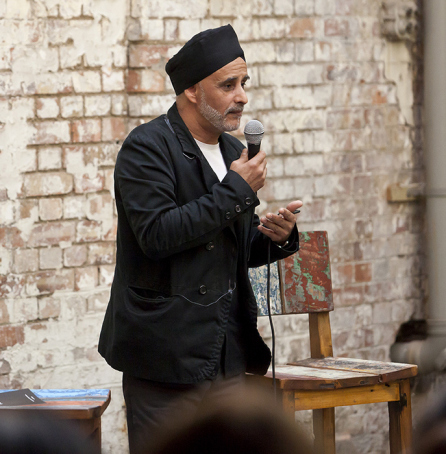 Jas Sehmbi is a bag designer and manufacturer, to the stars and other people with good taste. African-born, Jas Sehmbi, relocated to India at the age of four, before finally settling in England in 1970 . He specialised in Art at Eastram College, Stratford. Four months after completing his foundation, Jas was already selling small canvas and leather bags.
Jas Sehmbi is a bag designer and manufacturer, to the stars and other people with good taste. African-born, Jas Sehmbi, relocated to India at the age of four, before finally settling in England in 1970 . He specialised in Art at Eastram College, Stratford. Four months after completing his foundation, Jas was already selling small canvas and leather bags.
Jas' two loves of travel and music came together when he designed the first ever DJ record bag. Perhaps this was the beginning of his interest in the story of a given item of clothing – where did it come from, who made it? Since that pioneering bag, Jas has collaborated with many artists, designers and established brands including Miharayasuhiro and Simon Farrar, as well as establishing his own labels. He created the label Jas MB in 2000 which enjoyed immediate success: Barneys New York and cult fashion store YMC placed orders that sold out within the first day. Today, the men's and women's bags are stocked by 500 stores worldwide. They especially love it in Japan.
Jas has many strings to his bow. He has designed furniture and all manner of lighting. In the higgledy-piggledy offices of his East London workshop, among the thousands of fragrant leather samples, you spot a hat, or an oddly-shaped bulb, or a shoe – footwear, he says, might be next. 'Who knows?' And now and again, into the lining of an unsuspecting customer's bag, creeps a line or two of Jas Sehmbi verse.
Jas has always made a buzz and he'll be doing just that later tonight - on the decks.
 alex shulman,
alex shulman,  fantasy,
fantasy,  fashion,
fashion,  fashion and fantasy,
fashion and fantasy,  jas,
jas,  jas sehmbi,
jas sehmbi,  shulman,
shulman,  tessa,
tessa,  tessa edwards,
tessa edwards,  vogue in
vogue in  arts and culture,
arts and culture,  fashion
fashion 
